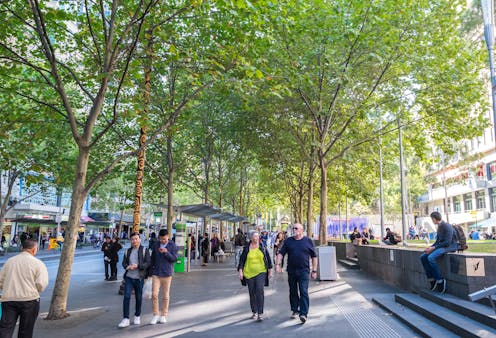State of the Environment report shows our growing cities are under pressure – but we’re seeing positive signs too
- Written by Gabriela Quintana Vigiola, Senior Lecturer in Planning, University of Technology Sydney

Urban areas are often thought of as concrete jungles, but they encompass much more than that. Nature, people and built structures are interconnected. Together they comprise the urban environment of the cities and towns in which we live.
In the past five years, Australian cities have continued to grow. In fact, the State of the Environment Report[1] released this week revealed most of our major cities have grown faster[2] than many developed cities overseas.
This growth has increased demand for resources such as water and energy. It has increased other impacts, too, including urban heat, congestion, pollution and waste.

















